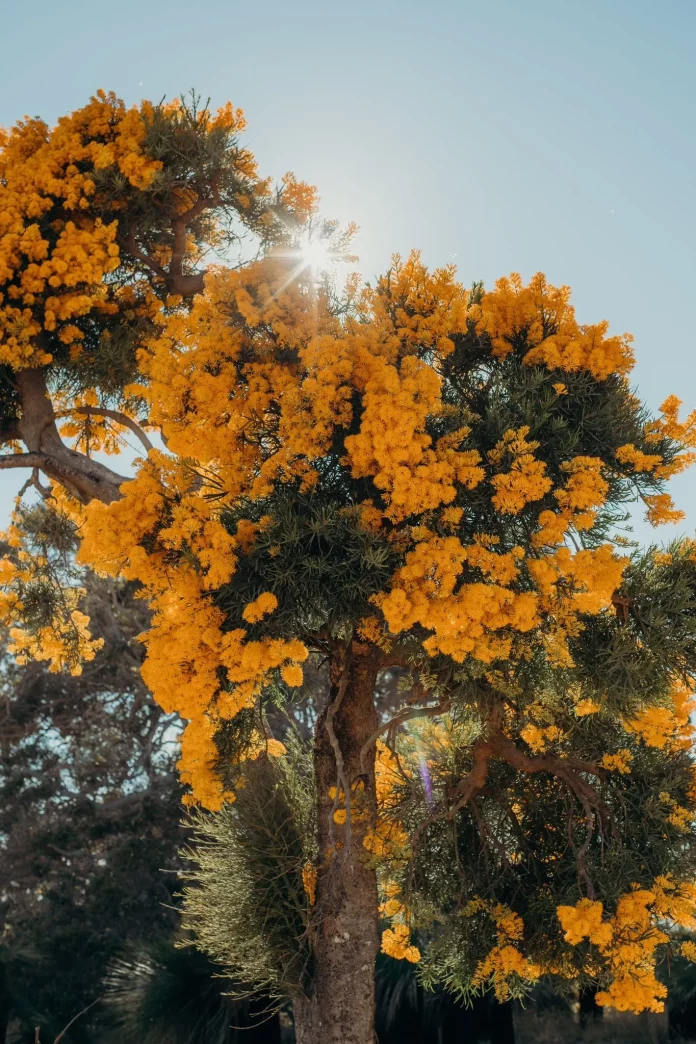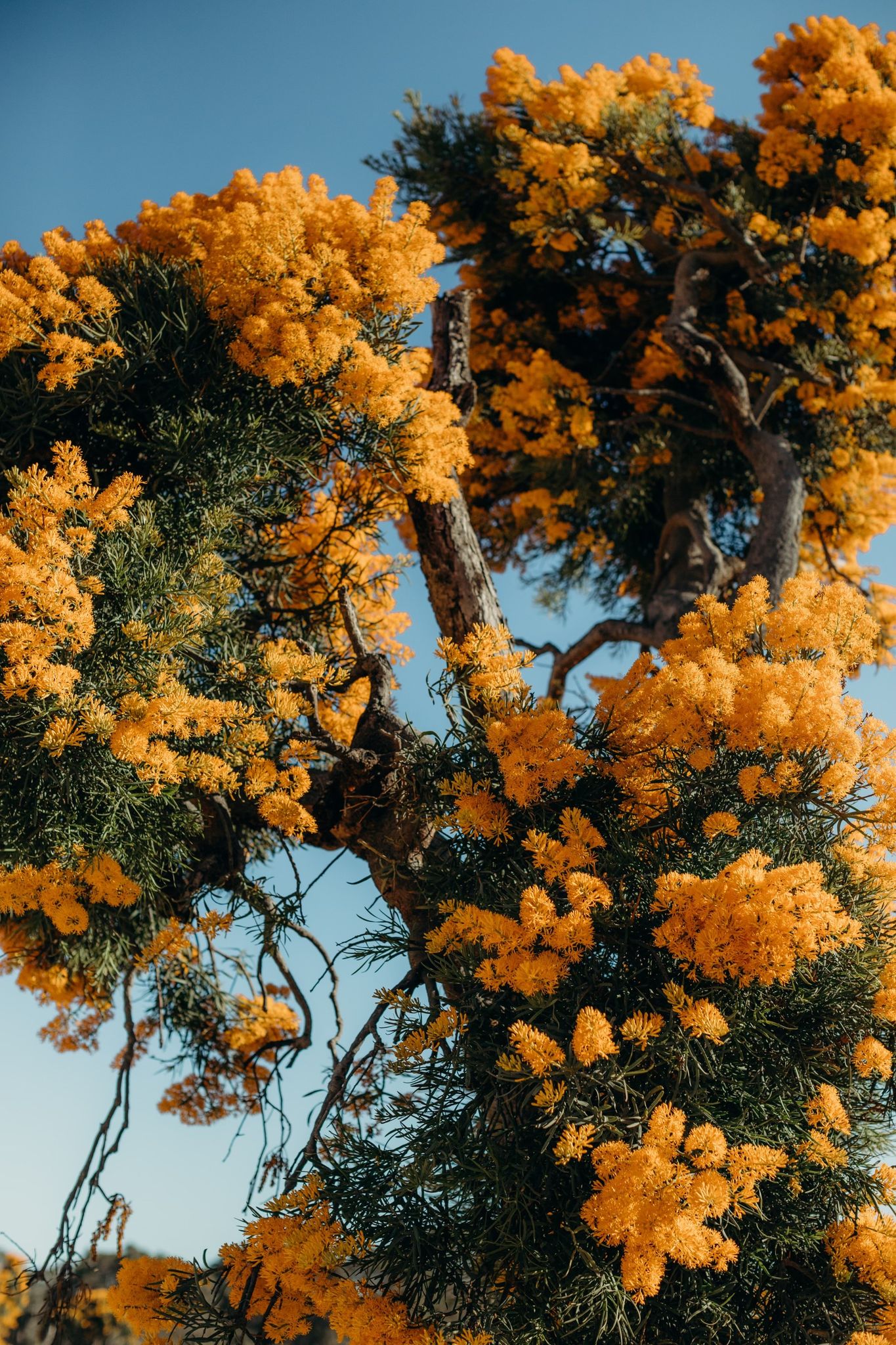The Nuytsia Floribunda Tree, known to many West Australians as the ‘Christmas Tree’ for its intensely flowering displays in the summer, is referred to as Moodja by the region’s First Nations people – the Wadandi (Saltwater) People.
The Nuytsia or Moodja tree is easily recognisable, as it displays vibrant yellowy orange flowers. Flowering in summer, particularly in December (known as Birak by the Wadandi people), this is what gives it the more commonly used name the Christmas tree.
What is the significance of the Nuytsia or Moodja tree?
The Moodja tree is significant to us Wadandi people as it is known as a spirit tree. It’s believed that each flower represents the spirit of a person that has passed on as quite often, if a person was feeling unwell, they would sit under the Moodja to pass away and have it take their spirit – adding another flower.
Its vibrant colouring is seen to resemble a sunset, which too is significant to us Wadandi people as it is believed that our spirits travel across the country, through the caves and over the ocean where the sun sets for our final resting place.
How should visitors interact with the tree?
Because of the Moodja tree’s flowers being such a vibrant yellowy orange colour, it makes it tempting to want to pick them, however this is something that is not allowed because of its spiritual significance.
The weight of the flowers and leaves of the Moodja tree can cause its branches to break off, and it is said not to stand under the tree for prolonged periods – as it is believed that if you hear a branch break someone you know will pass on.
Remember when on Wadandi Boodja (Country) to respect and care for country by leaving nothing but footprints and country will care for you in return.
SOME FACTS ABOUT THE MOODJA TREE:
The Moodja tree is native to south west Western Australia.
The trees were once commonly seen around Perth but have been largely cleared since colonisation.
They can grow up to 10 metres in height.
The flowers produce a large amount of pollen and nectar, making them a good source of food for birds and insects
Lookout for the tree on Wadandi Boodja (country) around Kambarang (October / November) and Birak (December / January)
Farm animals like horses and cattle eat at the trunks, and their hooves compact the ground around which can slowly kill the trees so it is advised to fence the Moodja off from any farm animals.
(article attributed: Margaret River)










